#brazil 1968
Text
On 10 November 1968, the Queen and Prince Philip watched the exhibition football game between São Paulo and Rio de Janeiro at the Maracaña stadium. The São Paulo team won and the Queen presented the winner’s trophy to Brazilian football legend, Pelé.


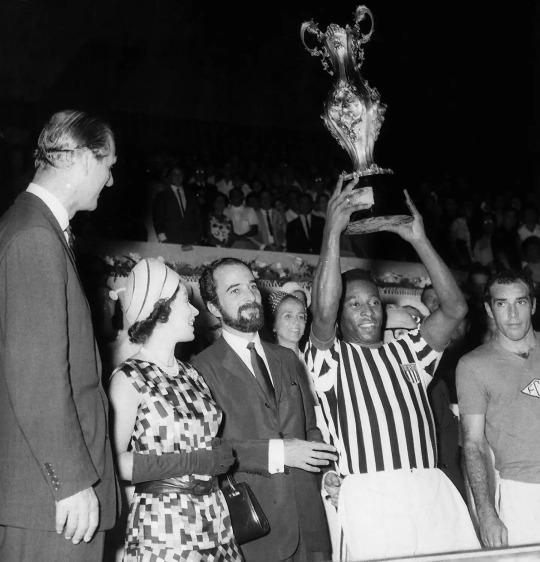
69 notes
·
View notes
Text

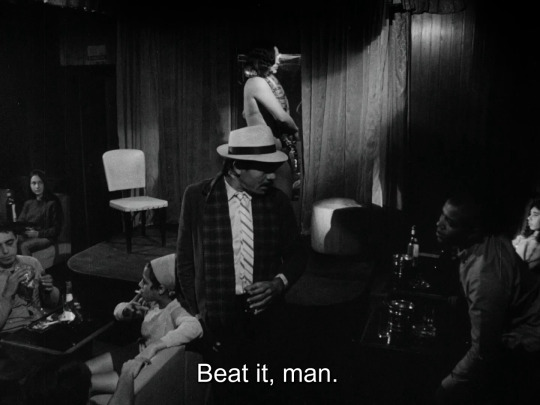
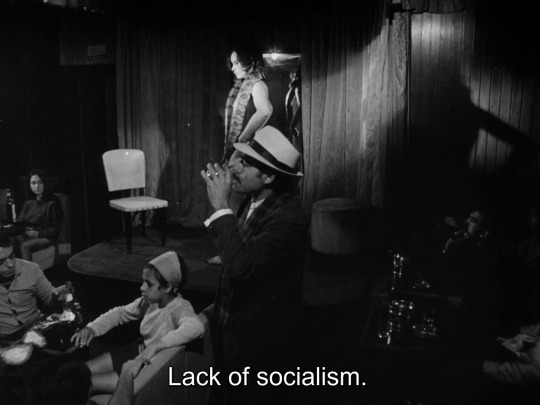

Rogério Sganzerla - The Red Light Bandit (1968)
18 notes
·
View notes
Text
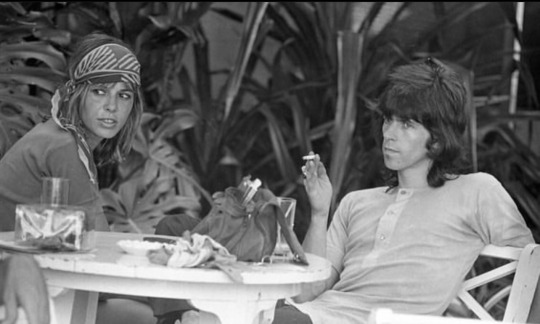
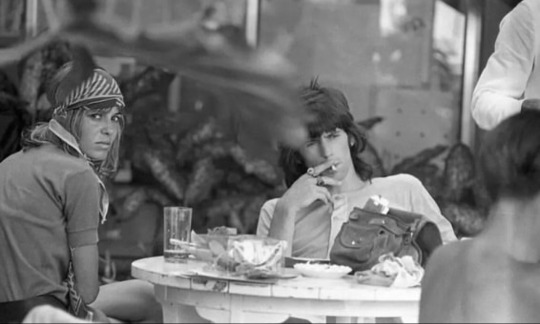
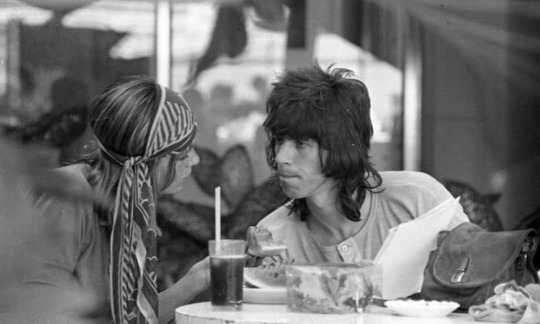

Anita Pallenberg and Keith Richards, sitting outside thier hotel in Rio de Janeiro in October of 1968🥀🥀🥀
Via @peace_and_rock_n_roll on Instagram🍁
#60s icons#girlsofthesixties#60s couples#rolling stones women#anita pallenberg#actress#keith richards#brazil#1968
12 notes
·
View notes
Text
Clarice, Caetano Veloso.
14 notes
·
View notes
Text



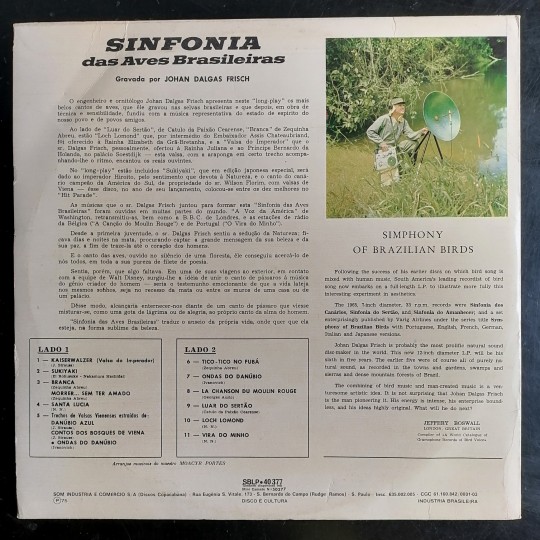
[rec. Johan DALGAS FRISCH]
"Sinfonia das Aves brasileiras"
(LP. Som. 1975) [BR]
youtube
2 notes
·
View notes
Text

2 notes
·
View notes
Text
#barbarella#barbarella 1968#jane fonda#science fiction#sci fi art#1960s#brazil#fan art#sticker art#movie art#art#drawing#movie history#pop art#modern art#pop surrealism#cult movies#portrait#cult film
0 notes
Text
In 1968, Harold Wilson’s Labour government ended free milk in secondary schools and three years later, Margaret Thatcher, then Conservative Education Secretary, stopped free milk for primary school children, earning her the taunt “Thatcher Thatcher, milk snatcher!”
In 1980, she also abolished the minimum nutritional standards for school meals and the statutory duty of local education authorities to provide a meals service. The standard of school meals fell so dramatically that a 1999 survey found that, despite food rationing, children in the 1940s and 1950s had a better diet than children growing up in the 1990s.
[...]
The current #FeedTheFuture campaign is calling on the government to expand free school meals to 900,000 children in England living in poverty who are not currently eligible. But Sustain, the alliance for better food and farming, go further, calling for universal free school meals across England, arguing that just like desks, books and bathrooms, we should give free school food to every child.
The British government could do well to look at countries already providing universal free school meals, including Brazil, India, Sweden, Finland, Estonia and a number of states across the USA, with Kenya and Benin making firm commitments. Indeed, London Mayor, Sadiq Khan, made the news by introducing free school meals to all children in London’s state-funded primary schools. Today, 418 million children receive free school meals worldwide.
87 notes
·
View notes
Text
Where It’s Most Dangerous to Be Black in America
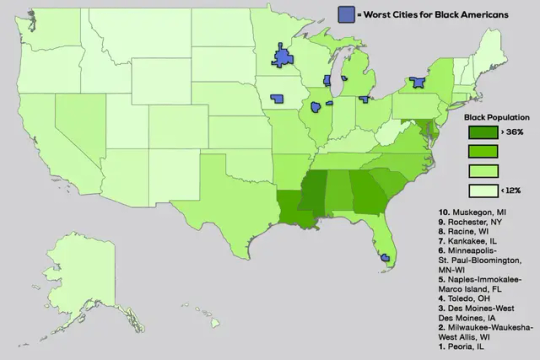
Black Americans made up 13.6% of the US population in 2022 and 54.1% of the victims of murder and non-negligent manslaughter, aka homicide. That works out, according to Centers for Disease Control and Prevention data, to a homicide rate of 29.8 per 100,000 Black Americans and four per 100,000 of everybody else.(1)
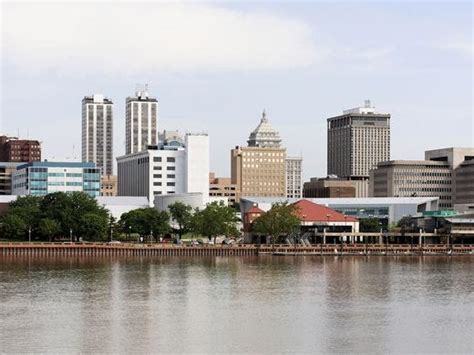
A homicide rate of four per 100,000 is still quite high by wealthy-nation standards. The most up-to-date statistics available from the Organization for Economic Cooperation and Development show a homicide of rate one per 100,000 in Canada as of 2019, 0.8 in Australia (2021), 0.4 in France (2017) and Germany (2020), 0.3 in the UK (2020) and 0.2 in Japan (2020).
But 29.8 per 100,000 is appalling, similar to or higher than the homicide rates of notoriously dangerous Brazil, Colombia and Mexico. It also represents a sharp increase from the early and mid-2010s, when the Black homicide rate in the US hit new (post-1968) lows and so did the gap between it and the rate for everybody else. When the homicide rate goes up, Black Americans suffer disproportionately. When it falls, as it did last year and appears to be doing again this year, it is mostly Black lives that are saved.
As hinted in the chart, racial definitions have changed a bit lately; the US Census Bureau and other government statistics agencies have become more open to classifying Americans as multiracial. The statistics cited in the first paragraph of this column are for those counted as Black or African American only. An additional 1.4% of the US population was Black and one or more other race in 2022, according to the Census Bureau, but the CDC Wonder (for “Wide-ranging Online Data for Epidemiologic Research”) databases from which most of the statistics in this column are drawn don’t provide population estimates or calculate mortality rates for this group. My estimate is that its homicide rate in 2022 was about six per 100,000.
A more detailed breakdown by race, ethnicity and gender reveals that Asian Americans had by far the lowest homicide rate in 2022, 1.6, which didn’t rise during the pandemic, that Hispanic Americans had similar homicide rates to the nation as a whole and that men were more than four times likelier than women to die by homicide in 2022. The biggest standout remained the homicide rate for Black Americans.

Black people are also more likely to be victims of other violent crime, although the differential is smaller than with homicides. In the 2021 National Crime Victimization Survey from the Bureau of Justice Statistics (the 2022 edition will be out soon), the rate of violent crime victimization was 18.5 per 1,000 Black Americans, 16.1 for Whites, 15.9 for Hispanics and 9.9 for Asians, Native Hawaiians and other Pacific Islanders. Understandably, Black Americans are more concerned about crime than others, with 81% telling Pew Research Center pollsters before the 2022 midterm elections that violent crime was a “very important” issue, compared with 65% of Hispanics and 56% of Whites.
These disparities mainly involve communities caught in cycles of violence, not external predators. Of the killers of Black Americans in 2020 whose race was known, 89.4% were Black, according to the FBI. That doesn’t make those deaths any less of a tragedy or public health emergency. Homicide is seventh on the CDC’s list of the 15 leading causes of death among Black Americans, while for other Americans it’s nowhere near the top 15. For Black men ages 15 to 39, the highest-risk group, it’s usually No. 1, although in 2022 the rise in accidental drug overdoses appears to have pushed accidents just past it. For other young men, it’s a distant third behind accidents and suicides.
To be clear, I do not have a solution for this awful problem, or even much of an explanation. But the CDC statistics make clear that sky-high Black homicide rates are not inevitable. They were much lower just a few years ago, for one thing, and they’re far lower in some parts of the US than in others. Here are the overall 2022 homicide rates for the country’s 30 most populous metropolitan areas.
Metropolitan areas are agglomerations of counties by which economic and demographic data are frequently reported, but seldom crime statistics because the patchwork of different law enforcement agencies in each metro area makes it so hard. Even the CDC, which gets its mortality data from state health departments, doesn’t make it easy, which is why I stopped at 30 metro areas.(2)
Sorting the data this way does obscure one key fact about homicide rates: They tend to be much higher in the main city of a metro area than in the surrounding suburbs.
But looking at homicides by metro area allows for more informative comparisons across regions than city crime statistics do, given that cities vary in how much territory they cover and how well they reflect an area’s demographic makeup. Because the CDC suppresses mortality data for privacy reasons whenever there are fewer than 10 deaths to report, large metro areas are good vehicles for looking at racial disparities. Here are the 30 largest metro areas, ranked by the gap between the homicide rates for Black residents and for everybody else.
The biggest gap by far is in metropolitan St. Louis, which also has the highest overall homicide rate. The smallest gaps are in metropolitan San Diego, New York and Boston, which have the lowest homicide rates. Homicide rates are higher for everybody in metro St. Louis than in metro New York, but for Black residents they’re six times higher while for everyone else they’re just less than twice as high.
There do seem to be some regional patterns to this mayhem. The metro areas with the biggest racial gaps are (with the glaring exception of Portland, Oregon) mostly in the Rust Belt, those with the smallest are mostly (with the glaring exceptions of Boston and New York) in the Sun Belt. Look at a map of Black homicide rates by state, and the highest are clustered along the Mississippi River and its major tributaries. Southern states outside of that zone and Western states occupy roughly the same middle ground, while the Northeast and a few middle-of-the-country states with small Black populations are the safest for their Black inhabitants.(3)
Metropolitan areas in the Rust Belt and parts of the South stand out for the isolation of their Black residents, according to a 2021 study of Census data from Brown University’s Diversity and Disparities Project, with the average Black person living in a neighborhood that is 60% or more Black in the Detroit; Jackson, Mississippi; Memphis; Chicago; Cleveland and Milwaukee metro areas in 2020 (in metro St. Louis the percentage was 57.6%). Then again, metro New York and Boston score near the top on another of the project’s measures of residential segregation, which tracks the percentage of a minority group’s members who live in neighborhoods where they are over-concentrated compared with White residents, so segregation clearly doesn’t explain everything.
Looking at changes over time in homicide rates may explain more. Here’s the long view for Black residents of the three biggest metro areas. Again, racial definitions have changed recently. This time I’ve used the new, narrower definition of Black or African American for 2018 onward, and given estimates in a footnote of how much it biases the rates upward compared with the old definition.
All three metro areas had very high Black homicide rates in the 1970s and 1980s, and all three experienced big declines in the 1990s and 2000s. But metro Chicago’s stayed relatively high in the early 2010s then began a rebound in mid-decade that as of 2021 had brought the homicide rate for its Black residents to a record high, even factoring in the boost to the rate from the definitional change.
What happened in Chicago? One answer may lie in the growing body of research documenting what some have called the “Ferguson effect,” in which incidents of police violence that go viral and beget widespread protests are followed by local increases in violent crime, most likely because police pull back on enforcement. Ferguson is the St. Louis suburb where a 2014 killing by police that local prosecutors and the US Justice Department later deemed to have been in self-defense led to widespread protests that were followed by big increases in St. Louis-area homicide rates. Baltimore had a similar viral death in police custody and homicide-rate increase in 2015. In Chicago, it was the October 2014 shooting death of a teenager, and more specifically the release a year later of a video that contradicted police accounts of the incident, leading eventually to the conviction of a police officer for second-degree murder.

It’s not that police killings themselves are a leading cause of death among Black Americans. The Mapping Police Violence database lists 285 killings of Black victims by police in 2022, and the CDC reports 209 Black victims of “legal intervention,” compared with 13,435 Black homicide victims. And while Black Americans are killed by police at a higher rate relative to population than White Americans, this disparity — 2.9 to 1 since 2013, according to Mapping Police Violence — is much less than the 7.5-to-1 ratio for homicides overall in 2022. It’s the loss of trust between law enforcement agencies and the communities they serve that seems to be disproportionately deadly for Black residents of those communities.
The May 2020 murder of George Floyd by a Minneapolis police officer was the most viral such incident yet, leading to protests nationwide and even abroad, as well as an abortive local attempt to disband and replace the police department. The Minneapolis area subsequently experienced large increases in homicides and especially homicides of Black residents. But nine other large metro areas experienced even bigger increases in the Black homicide rate from 2019 to 2022.
A lot of other things happened between 2019 and 2022 besides the Floyd protests, of course, and I certainly wouldn’t ascribe all or most of the pandemic homicide-rate increase to the Ferguson effect. It is interesting, though, that the St. Louis area experienced one of the smallest percentage increases in the Black homicide rate during this period, and it decreased in metro Baltimore.
Also interesting is that the metro areas experiencing the biggest percentage increases in Black residents’ homicide rates were all in the West (if your definition of West is expansive enough to include San Antonio). If this were confined to affluent areas such as Portland, Seattle, San Diego and San Francisco, I could probably spin a plausible-sounding story about it being linked to especially stringent pandemic policies and high work-from-home rates, but that doesn’t fit Phoenix, San Antonio or Las Vegas, so I think I should just admit that I’m stumped.
The standout in a bad way has been the Portland area, which had some of the longest-running and most contentious protests over policing, along with many other sources of dysfunction. The area’s homicide rate for Black residents has more than tripled since 2019 and is now second highest among the 30 biggest metro areas after St. Louis. Again, I don’t have any real solutions to offer here, but whatever the Portland area has been doing since 2019 isn’t working.
(1) The CDC data for 2022 are provisional, with a few revisions still being made in the causes assigned to deaths (was it a homicide or an accident, for example), but I’ve been watching for weeks now, and the changes have been minimal. The CDC is still using 2021 population numbers to calculate 2022 mortality rates, and when it updates those, the homicide rates will change again, but again only slightly. The metropolitan-area numbers also don’t reflect a recent update by the White House Office of Management and Budget to its list of metro areas and the counties that belong to them, which when incorporated will bring yet more small mortality-rate changes. To get these statistics from the CDC mortality databases, I clicked on “Injury Intent and Mechanism” and then on “Homicide”; in some past columns I instead chose “ICD-10 Codes” and then “Assault,” which delivered slightly different numbers.
(2) It’s easy to download mortality statistics by metro area for the years 1999 to 2016, but the databases covering earlier and later years do not offer this option, and one instead has to select all the counties in a metro area to get area-wide statistics, which takes a while.
(3) The map covers the years 2018-2022 to maximize the number of states for which CDC Wonder will cough up data, although as you can see it wouldn’t divulge any numbers for Idaho, Maine, Vermont and Wyoming (meaning there were fewer than 10 homicides of Black residents in each state over that period) and given the small numbers involved, I wouldn’t put a whole lot of stock in the rates for the Dakotas, Hawaii, Maine and Montana.
(https://www.washingtonpost.com/business/2023/09/14/where-it-s-most-dangerous-to-be-black-in-america/cdea7922-52f0-11ee-accf-88c266213aac_story.html)
139 notes
·
View notes
Text
So here's something interesting...
The Beatles Derek Taylor Never-Before-Heard Collection of Lost Beatles Recordings: Including the 1967 Kenwood Sessions and John Lennon Private Recordings
This is the track listing from the description:
Tape 1: Unheard Beatles Sgt Pepper Rehearsals from Kenwood late 66 early 67
Run time is 56 minutes, songs include:
Revolution #9, mainly John in many accents, George can be heard, Paul too, Ringo one time, Terry Doran is also heard being interviewed by John, Terry Doran was ‘The Man From The Motor Trade’ on Sgt Pepper, every identical animal sound effect from Good Morning Good Morning is featured throughout, probably pre-dates Pepper and John has the sound effects saved, cockerel, hens, sheep, horse, pigs, cat, dogs etc, the very ones used on Pepper. Sitar drones almost all the way through by George, Piano backdrop also
Track Listing:
That much Control
Monte Carlo rally sound effects Terry Doran is Jack Brabham Formula 1 racer
Cat Feeding Services (Monty Python esque sketch)
A million miles away, John Indian accent Beatles far east tours in 66
Crazy banjo song, JL bellows
I’m aware of the situation monologue
Swing your partners
Lennon.McCartney complaining about the heat
John and George shouting over a very loud backing track
John/Paul counting in 123 testing, JL turns it into a poem.
Dear Prudence very early demo John wrote it way before 1968
British Police are pigs, in an Indian accent
Tape 2: George Harrison With the Bonzo Dog Doo-Dah Band and Jimmy Page.
15 tracks, 59 minutes George with his Thames Valley muso friends, Jimmy Page, Jon Lord, Joe Brown, Sam Brown, Bonzo Dog Doo-Dah band (Neil Innes, Legs Larry Smith, Vivian Stanshall) Alvin Lee, all songs written by the Bonzos and George, all recorded at FP.
Track Listing:
George into talk while playing guitar, introducing a new song
Brazil take 1 written for the Handmade films project Brazil (never went to production)
Brazil take 2
Brazil Take 3
Sooty Goes to Hawaii
Mandalay monologue for handmade films production of the same name
Sooty Goes to Hawaii #2
Sooty Goes to Hawaii #3
Operatic Aria sung by Georges father-in-law and Olivia Harrisons dad Zeke Harrison, I doubt that Olivia has heard this
Bullshot theme song for Handmade films completed production.
Hare Krishna chant by everyone
Chant 2
While my Guitar Gently weeps with Jimmy Page on guitar
Same with Alvin Lee on guitar
if I Needed Someone
Tape 3: George with Bonzo Dog Doo-Dah Band band, all co-written 25.30 mins, 16 tracks
Track Listing:
Intro Legs Larry Smith
Do You Remember
Nothing Ever Changes
Urban Spaceman
Isle of Money (I Love Money)
Can you Groove (George)
There’s a Bright Golden Boil on my Penis
I Like Cesar
Misery Farm
Julie
Danda
When You Gotta Poop
Now You’re Asleep
Telling me The End
Viv Has Gone to Heaven
Mandalay Monologue #2
Tape 4: John Interviews Yoko 1969
Recorded by John in 1969, 45 minutes, John questions Yoko’s motives for being with him, discusses very personal matters, very revealing.
Tape 5: Yoko with Dr. Artur Janov
Yoko’s Primal Scream therapy 1 hr 40 mins, of very personal therapy, Yoko discusses John, music and very personal issues including John’s friendship with George.
Tape 6: “One From The Nursery” Unreleased John Ono Lennon Album
John and Kyoko Cox Tittenhurst Park
Run time is 47 minutes
4 tracks
Lots of John talking and playing acoustic guitar (sounds like his J60E) recorded at Christmas time, Various songs stand out, all written by John & Kyoko
John, I Love You
I Wish You Were my Father.
#john lennon#paul mccartney#george harrison#ringo starr#the beatles#derek taylor#yoko ono#a lot to unpack here
79 notes
·
View notes
Text


On July 7, 1960, a typical school day turned into a parent's worst nightmare for Freda Thorne. That morning, she bid farewell to her 8-year-old son, Graeme Thorne, never imagining it would be their final goodbye. Little did she know, Graeme would become the first victim of a ransom kidnapping in Australia's history, sparking a nationwide tragedy that would forever change the landscape of lottery procedures.
Graeme was supposed to meet family friend, Phyllis Smith, for the school run, but when she arrived at their designated spot, he was nowhere to be found. Concern turned to panic as Freda reported her son missing to the police, initiating a desperate search that would grip the nation.
The chilling reality of Graeme's abduction became starkly evident when Freda received a phone call demanding £25,000 for his safe return, accompanied by a horrifying threat to "feed the boy to the sharks" if the ransom wasn't paid by 5PM. Sergeant Larry O'Shea, posing as Freda's husband Brazil Thorne, engaged with the kidnapper, unaware that Brazil had recently won £100,000 in the Opera House Lottery, a fact that had been widely publicized in the media.
Despite efforts to comply with the kidnapper's demands, including instructions to prepare the ransom money, the ordeal took a grim turn. Graeme's empty school case was discovered near the meeting spot with Phyllis Smith, followed by the discovery of his lunch bag and school books miles away.
The agonizing wait for Graeme's return came to a devastating end when his lifeless body was found on August 16, 1960, in Seaforth, Sydney. Wrapped in a tartan blanket, bound with string, and gagged with a scarf, Graeme had been killed within 24 hours of his abduction.
Forensic analysis uncovered crucial evidence linking Stephen Leslie Bradley, a Hungarian migrant, to the crime. Despite fleeing to Britain, Bradley was apprehended in Colombo, Ceylon, and subsequently found guilty, receiving a life sentence. His death in prison on October 6, 1968, provided little solace to a grieving family and a nation in shock.
16 notes
·
View notes
Text

Marianne Faithfull in Brazil, 1968🍀👒
Via @weirdtvland on Instagram🍀
#60s icons#girlsofthesixties#marianne faithfull#british singer and actress🇬🇧#muse#brazil 🇧🇷#1968#shrimptons boyds asher faithfull and more
20 notes
·
View notes
Text
Superbacana, Caetano Veloso.
5 notes
·
View notes
Text
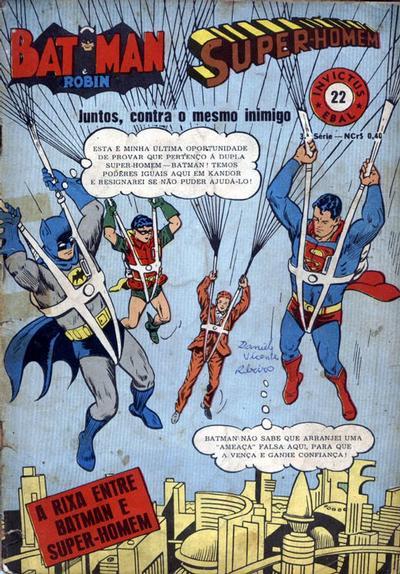
Batman & Super-Homem (Invictus) #22 - October 1968 ( EBAL - Brazil)
Brazilian reprint title
22 notes
·
View notes
Text

Hering Textile Factory (1968) in Blumenau, Brazil, by Hans Broos
97 notes
·
View notes
Text

Genaro de Carvalho painting Veruschka, Brazil, 1968
48 notes
·
View notes